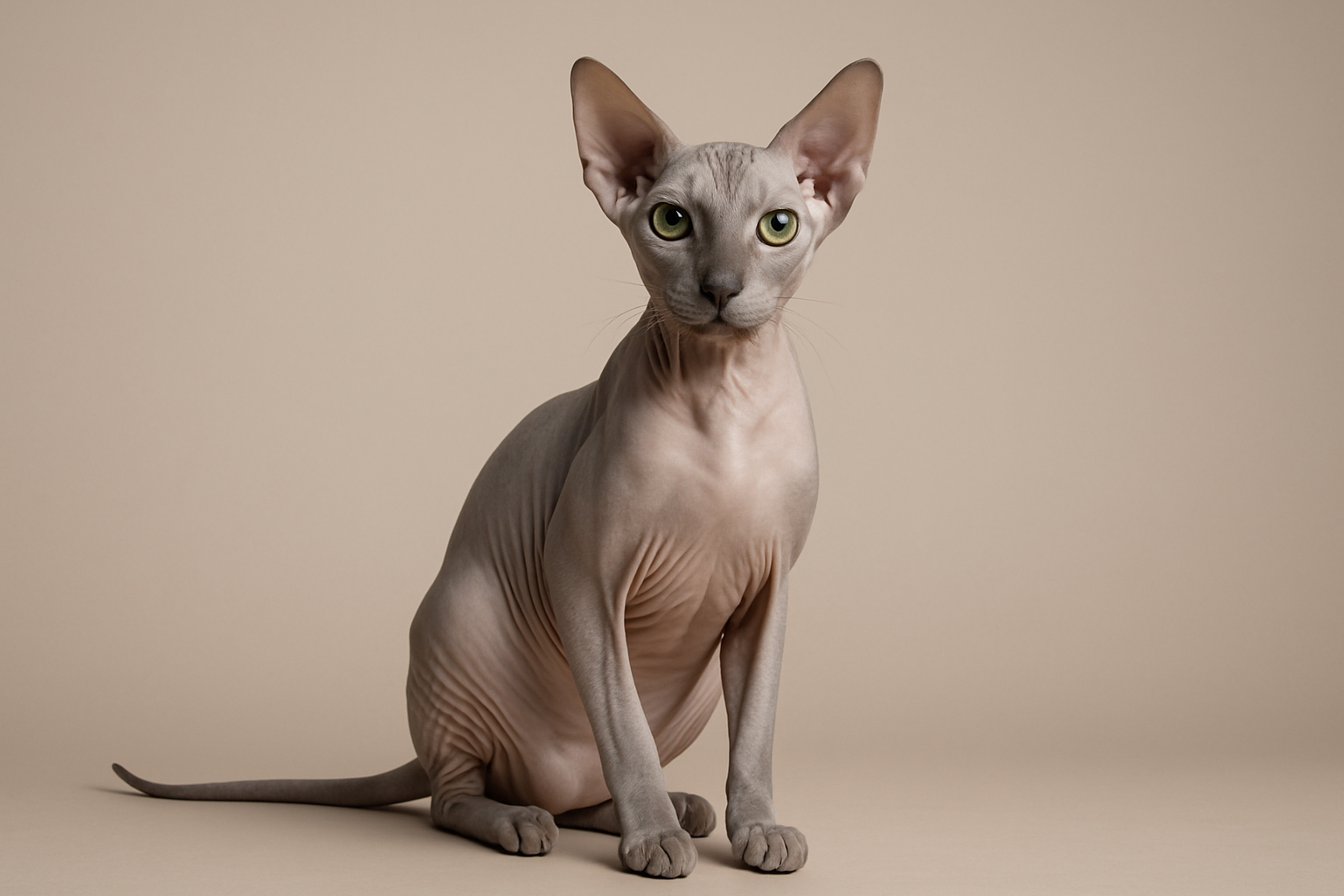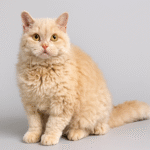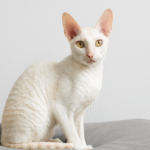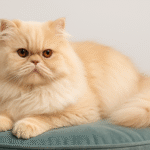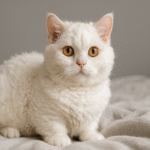The Peterbald Cat is one of those cats that makes you do a double take — all sleek lines, oversized ears, and a surprisingly snuggly personality. Originally from Russia, this unique breed shares some traits with the Sphynx and Oriental Shorthair but has a charm all its own. Whether completely bald or covered in soft peach fuzz, the Peterbald is known for its long legs, wrinkled skin, and love of human company.
If you’re thinking about bringing home one of these elegant, quirky cats, you’re in the right place. This guide covers everything you need to know: from Peterbald personality and coat types to grooming, health, cost, and how they compare to other hairless cat breeds.
Quick Breed Facts
- Origin: Russia (1990s)
- Breed registries: TICA, WCF, CFA (experimental)
- Weight range: 6–10 pounds
- Lifespan: 12–15 years
- Coat: Hairless, peach fuzz, velour, or brush coat
- Colors and patterns: Wide variety, including solid, tabby, pointed
- Eye color: Green, blue, amber, or odd-eyed
- Grooming: Low but requires skin care
- Activity level: High
- Affection level: Very high
- Vocality: Talkative
- Good with children: Yes
- Good with other pets: Yes
History & Origin
The Peterbald Cat got its start in St. Petersburg, Russia, in the 1990s when breeders crossed a Donskoy (a Russian hairless breed) with an Oriental Shorthair. The goal? To create a sleek, people-loving cat with the unique skin of the Donskoy and the affectionate, outgoing nature of Orientals.
The result was something truly special — a slim, muscular cat with a soft heart and either no fur or just a whisper of it. The Peterbald was officially recognized by TICA in 2003 and has since gained a small but loyal fan base among cat lovers who adore rare breeds with big personalities.
Personality & Temperament
Peterbalds are sweet, social, and deeply affectionate. They form strong bonds with their people and often act more like little shadows—following you from room to room, chatting, or curling up beside you whenever they get the chance. This is a cat that wants to be part of your day-to-day life, not just watch from the sidelines.
They’re also clever and full of energy. Many enjoy puzzle feeders, wand toys, or even games of fetch. Peterbalds tend to get along well with children and other pets, especially if they’re given proper introductions and plenty of attention.
Appearance & Coat Types
The Peterbald has a look that’s hard to forget—long and lean with oversized ears, almond-shaped eyes, and a graceful frame. But their most unique feature is their coat (or sometimes, the complete lack of one). Depending on genetics, Peterbalds can have several different coat types:
- Hairless: Smooth, warm skin with visible wrinkles
- Chamois/Velour: Peach fuzz, soft to the touch
- Brush Coat: Sparse, wiry fur that may feel rough
- Straight Coat: Short, fine fur (less common in show cats)
One of the quirks of this breed is that kittens can change coat types as they grow. A baby with a light fuzz might lose it completely or develop a thicker brush coat over time. Peterbalds also come in many colors and patterns, which only adds to their one-of-a-kind charm.
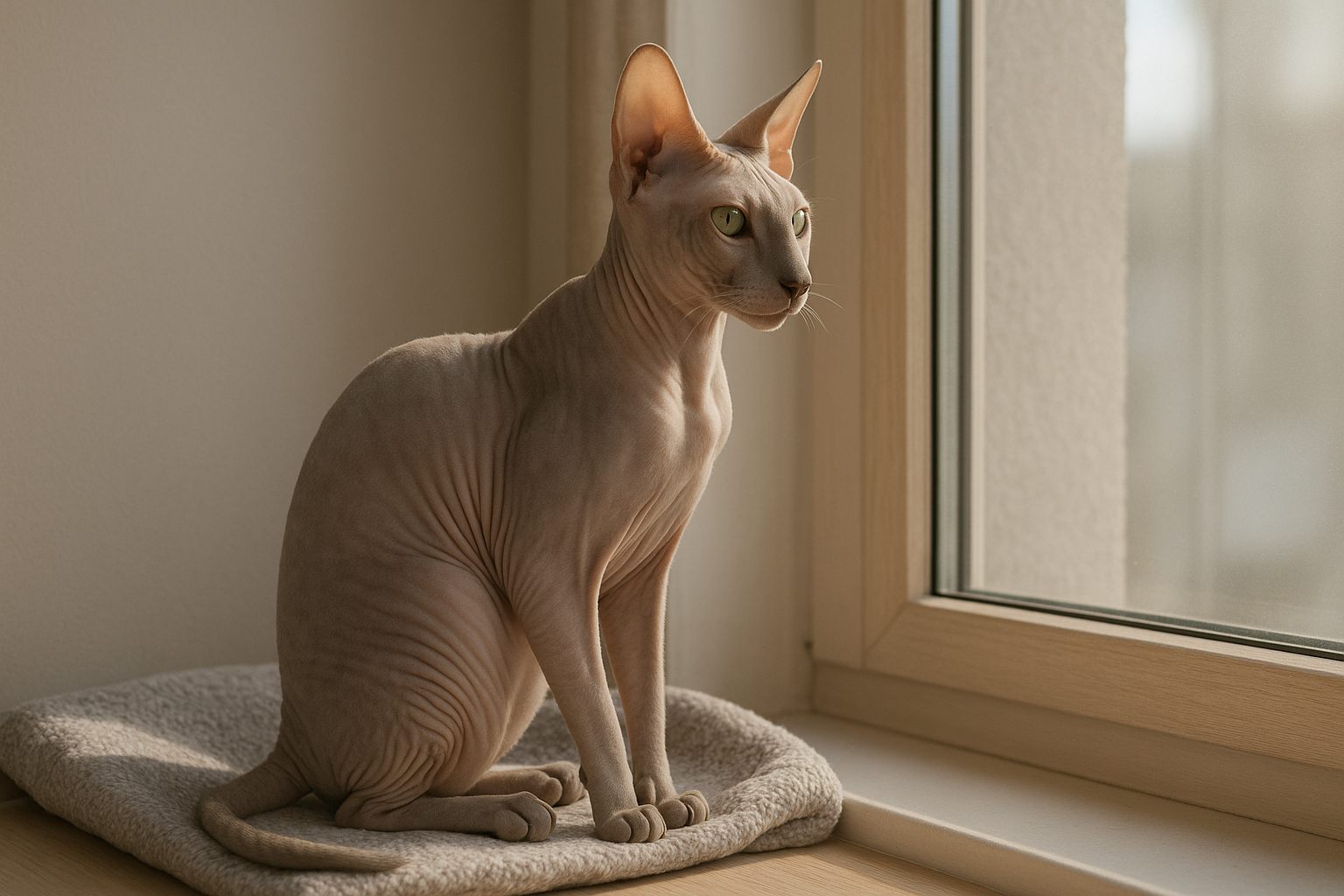
Activity & Play
Peterbalds aren’t couch potatoes. These cats are always on the move — climbing furniture, chasing toys, and investigating every nook of the house. Without enough stimulation, they can get bored fast, so it helps to rotate toys, schedule daily playtime, and keep things interesting with new challenges.
They’re also natural climbers, so don’t be surprised if you find yours surveying the room from the top of a bookshelf. A tall cat tree or a few mounted shelves will go a long way in keeping your Peterbald entertained and satisfied.
Grooming & Care
Even though Peterbalds may look low-maintenance, their skin actually needs a bit of TLC. Since they don’t have fur to absorb oils, their skin can get greasy or collect dust. A gentle bath every week or two will help keep them clean and comfy. Just make sure to use a cat-safe shampoo and skip anything with harsh scents.
You’ll also want to stay on top of ear cleaning and nail trims — and don’t forget their need for warmth. Soft blankets, heated beds, or even a cozy cat sweater can help them stay toasty during the colder months.
Health & Lifespan
Peterbalds are generally healthy cats, but their lack of fur means they need some extra protection. They can be sensitive to temperature changes, prone to sunburn, and may develop skin irritation if not kept clean. These cats do best as indoor-only companions where you can keep their environment cozy and safe.
Some Peterbalds may also deal with dental issues or have slightly sensitive stomachs. As for the idea that they can have Down Syndrome — that’s a myth. While some may have unique facial features, cats don’t have the same chromosomes as humans, so the condition doesn’t apply. With regular vet checkups, proper grooming, and good nutrition, most Peterbalds live long, happy lives well into their teens.
Family Compatibility
Peterbalds are affectionate, people-loving cats that fit right into family life. They enjoy being the center of attention, happily follow you around the house, and are usually great with kids and other pets. If you’re looking for a playful cat who also loves to snuggle, this breed brings the best of both worlds.
Because they’re so social, Peterbalds really don’t like being left alone for long. They’re happiest in homes where someone is around most of the time — or where they have another furry friend to hang out with.
Recommended Supplies
Because Peterbalds don’t have fur to keep them warm, it’s important to give them cozy places to nap and snuggle. A heated bed or soft blankets are great for chilly days, and many Peterbalds even enjoy wearing lightweight sweaters around the house.
They’re also playful and curious cats, so stocking up on interactive toys, puzzle feeders, and cat trees will help keep them mentally and physically engaged. Just be sure everything you choose is soft on their skin since they don’t have fur for protection.
Peterbald Cat FAQs
Are Peterbald cats hypoallergenic?
While no cat is truly hypoallergenic, Peterbalds produce less dander and shed less than most breeds, which can make them easier for allergy sufferers to tolerate.
How much does a Peterbald cat cost?
Expect to pay between $1,200 and $3,000 from a reputable breeder. Price depends on coat type, pedigree, and whether the cat is show quality.
Sphynx Cat vs Peterbald: What’s the difference?
While both breeds are hairless, Peterbalds have a more slender, Oriental-style body with longer faces and a variety of coat types — including peach fuzz and brush coats. The Sphynx is chunkier with a rounder head and always fully hairless. Their personalities are similar, but their looks and textures can be quite different!
Can Peterbald cats get Down Syndrome?
No. While some cats may exhibit unusual facial features or neurological conditions, cats cannot genetically have Down Syndrome. The condition is specific to humans due to our chromosome count.
Is the Peterbald Cat Right for You?
The Peterbald is a rare gem — loving, social, and full of personality. If you want a cat who’ll stick close by, keep you entertained, and look like no other, this could be your perfect match. They do best in homes where they’ll get plenty of attention and stay safely indoors.
As long as you’re up for a little extra grooming and a lot of snuggles, the Peterbald will reward you with loyalty, playfulness, and a quirky charm that’s hard to resist.

